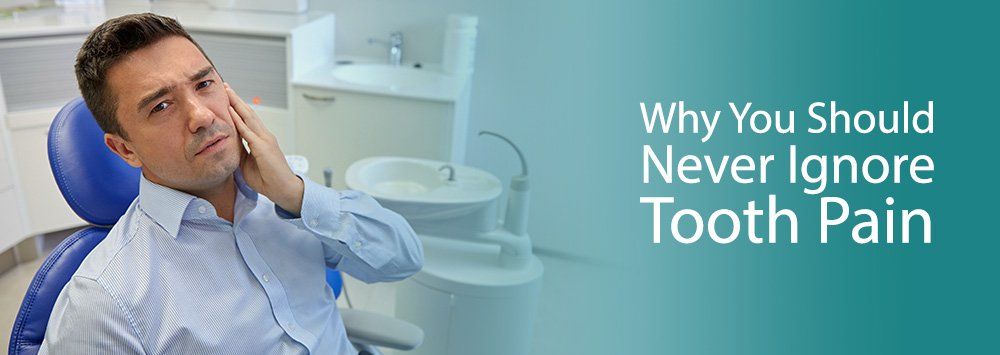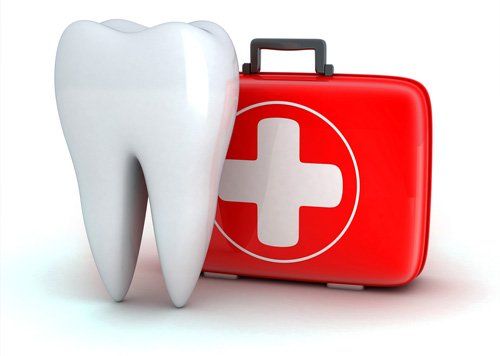Why You Should Never Ignore Tooth Pain
When it comes to coping with tooth pain, I’ve seen nearly every home remedy there is: ginger, salt water, tea bags, clove oil, over-the-counter gels, painkillers and more. While remedies may provide temporary relief, it’s important to fix the underlying cause of the problem as quickly as possible. This means a trip to my office.
Tooth pain is your body’s way of telling you something is wrong. You may have a cavity that’s getting worse or an infected tooth that needs to be treated before the infection spreads. Pain could also come from a gum infection, which is simple to treat but, if neglected, could spread to the jaw and be harder to address.
By diagnosing the problem immediately, I can relieve your discomfort and remedy the underlying cause of the pain. The longer that’s put off, the more likely the problem will have a chance to develop further. That’s why it’s so important to come on in sooner than later.
If you’re suffering from tooth pain, come into the office for a free x-ray and consultation so we can figure out what you need and get you feeling better fast.
Tooth Pain?
What Your Teeth Are Trying to Tell You
When people get a toothache, they usually think it’s from a cavity. But the fact is different types of tooth pain can signal different dental problems. It is true, however, cavities are the most common cause of tooth pain. To prevent them—and the toothaches they cause—it helps to understand how cavities come about.
What is a Cavity?
A cavity forms when bacteria—billions of tiny living organisms in your mouth— destroy a portion of your tooth enamel, the outer covering of your tooth.
Not all bacteria is harmful; some types keep our teeth and gums in good health. However, when bad bacteria turn sugar into acid, this can eat away at the enamel, causing a "hole" or cavity. Depending on how far it advances into the tooth, a cavity can cause pain and other discomfort, as described below.
Types of Tooth Pain
Throbbing or shooting pains:
When a cavity is not filled early enough, it provides a gateway for bacteria to enter the tooth’s center and cause infection. The bacterial infection can even travel down to the tooth root to the bone beneath it. When this happens, throbbing or shooting pains can result, along with a temperature, swelling and sensitivity to heat and cold.
Rear jaw pain:
When a person’s wisdom teeth—the four teeth in the very back of one’s mouth— don’t come in correctly, infection and swelling can occur in the rear jaw and face.
Sore, swollen or bleeding gums:
Some of the bacteria in our mouths form a film over our teeth. If not removed with regular brushing and flossing, this bacteria can infect the gums. Left untreated, the gum infection can cause jawbone loss which, in turn, causes teeth to loosen. In some cases, the loose teeth must be extracted.
When you suffer from tooth pain, listen to what your teeth are telling you and come see Dr. Davis for an exam as soon as possible.
What to do When You Break A Crown
A crown is a strong porcelain covering for a tooth that’s suffered damage. If you have a crown, you may find yourself in a position where your crown breaks. The best-case scenario is that it comes off in one piece. In this case, the tooth under the crown may have suffered some damage so the crown no longer fits snugly. You may be able to temporarily glue it back in place with dental adhesive until you can get to the dentist. If just a piece breaks off, it’s a little harder to deal with.
SO WHAT SHOULD YOU DO IF YOU EXPERIENCE THE FAILURE OF A CROWN?
1.
First, call our office and get scheduled for the next possible appointment.
2.
Then check the crown out carefully. If it’s more or less in one piece, get yourself some dental adhesive from any large drugstore. Rinse and dry both the crown and the tooth and use the adhesive to cement the crown back in place. (Don’t ever use a product not intended for dental use, such as Super Glue.) Also, never replace the crown without using adhesive because you could swallow or inhale the crown while sleeping or eating.
3.
If the crown is broken into more than one part, it becomes even more urgent for you to come into the office as soon as you can. There isn’t a lot you’re going to be able to do with an over-the-counter remedy. Either way, while temporarily cementing a crown back into place will work for a little while, it’s important to get into the office for a permanent repair as quickly as possible. We’ll diagnose the problem right there and, if a new crown is needed, we’ll make you one on the spot using our new, same-day crown equipment.








